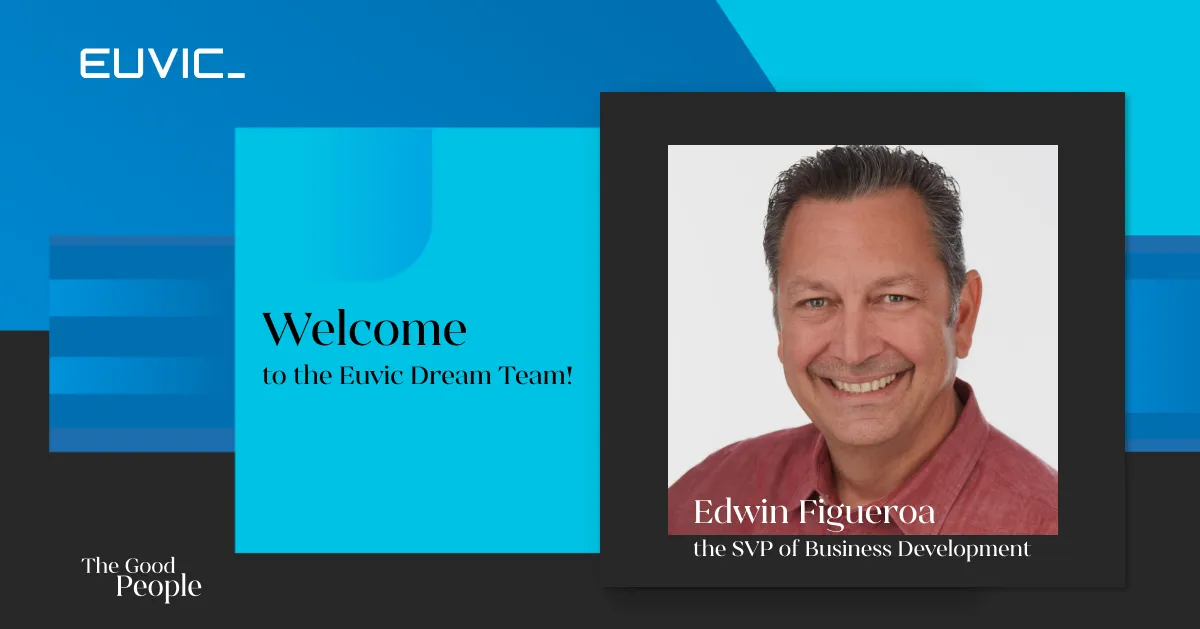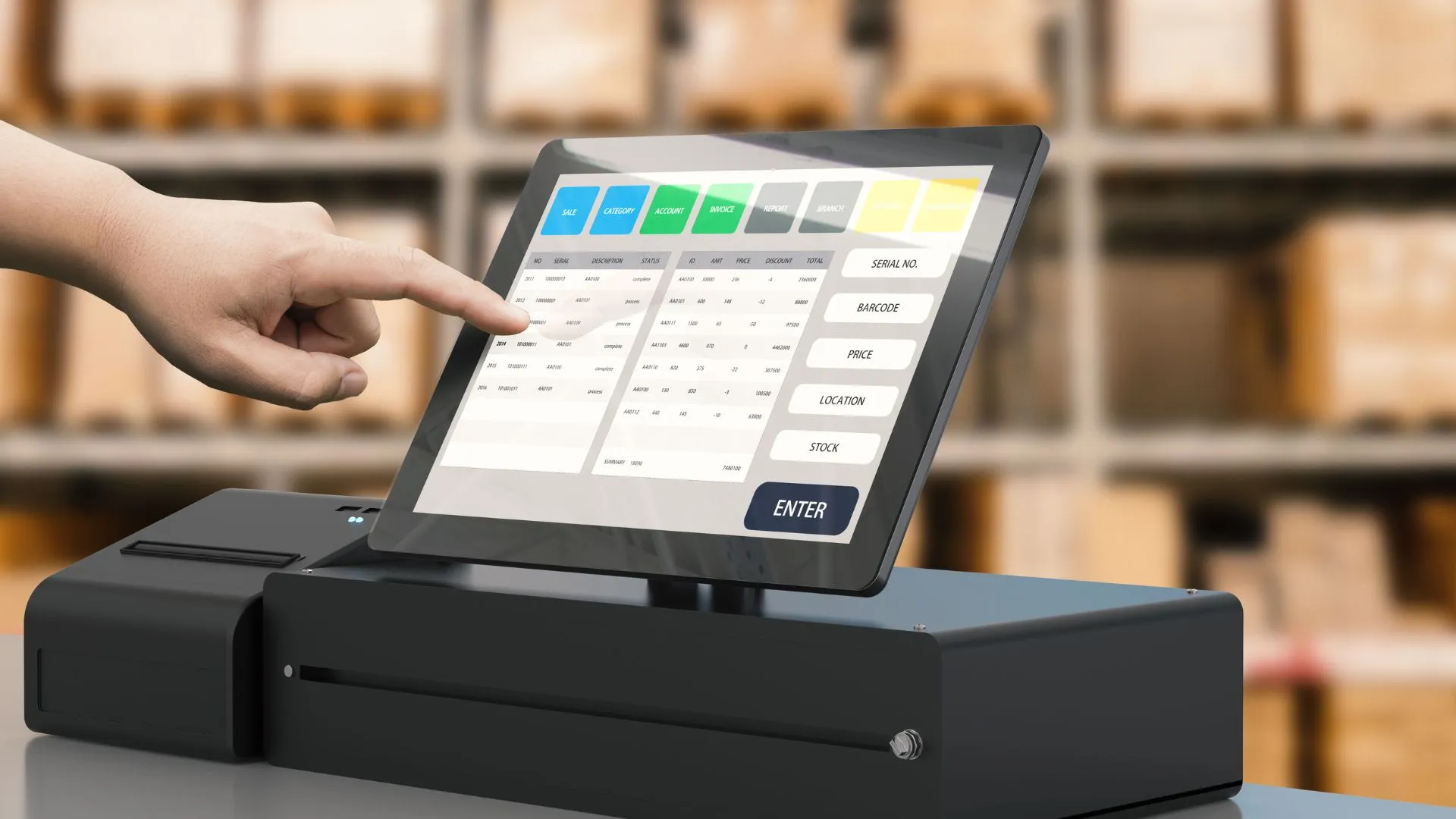How To Modernize Legacy Systems For Banking App & Fintech Solutions In 7 Simple Steps
Modernizing legacy systems is critical for banking companies aiming to stay competitive, secure, and efficient.
Despite the perceived safety of using familiar, outdated software, more than 50% of chief information officers (CIOs) spend roughly sixty percent of their time managing outdated legacy software.
Legacy systems often lead to high maintenance costs, security vulnerabilities, and integration challenges.
In fact, 74% of companies fail to complete their legacy system modernization projects.
Banks and fintech companies are certainly no exception.
As financial companies strive to meet customer expectations and comply with regulatory requirements, modernizing these systems becomes essential for improving operational efficiency and driving business growth.
However, it’s not just about the technology—creating a sleek, modern app that users love is equally important.
A well-designed user interface (UI) and exceptional user experience (UX) can set a financial app apart from the competition, making it visually appealing and easy to use.
Incorporating the latest design trends and best practices into the modernization process can transform outdated systems into intuitive, visually compelling applications that enhance customer satisfaction and brand loyalty.
Establishing an up-to-date front-end user interface and user experience (UX/UI) is one of the most critical elements of modernizing legacy systems.
Additionally, regulatory and legal compliance is a critical challenge in legacy modernization. Adapting systems to meet evolving regulations like GDPR and PSD2 is essential to avoid legal risks and hefty fines.
By following a structured approach, financial institutions can successfully transition to modern, scalable, and secure platforms, positioning themselves for long-term success in a competitive market.
In this post, we will dive into modernization for banking and fintech applications. Let’s dive in.
What Is Legacy System Modernization For Banking And Fintech Apps?
Legacy system modernization involves updating and transforming outdated software and hardware systems to meet current technological standards and customer expectations.
In the banking and fintech sectors, legacy systems are often critical to daily operations, yet they come with significant limitations that can impede business growth, security, and efficiency.
They rely on older programming languages, databases, and hardware, making them inflexible and difficult to maintain. Despite still meeting their initial requirements, these systems cannot support the dynamic needs of modern banking and fintech operations.
Why Do Banking And Fintech Companies Need To Modernize Legacy Systems?
There are several compelling reasons why banks and fintech companies should modernize legacy systems. Here are a few of the most pressing reasons…
Reason 1: Enhanced Front-End User Experience (UX):
Customers today expect seamless, intuitive, and fast interactions with their banking and financial applications. Legacy systems often fail to deliver this level of service, resulting in poor user satisfaction and lost business opportunities.
- Design and Usability: Modernizing the user interface (UI) and overall design can significantly enhance usability, making applications more intuitive and visually appealing.
- Speed and Performance: Upgrading to modern systems can dramatically improve application speed, reducing load times and enhancing the overall performance.
- Personalization: Modern systems can incorporate advanced analytics and AI to tailor services and recommendations to individual user preferences and behaviors.
Reason 2: Back-End Optimization And Integrations:
While the focus is often on front-end improvements, back-end optimization is equally crucial for a successful modernization strategy. Upgrading the infrastructure and underlying systems can lead to significant improvements in operational efficiency and scalability.
- Scalability: Modern back-end systems are designed to handle increased transaction volumes and support business growth.
- Security: Up-to-date security protocols and encryption standards are vital for protecting sensitive financial data.
- Integration Capabilities: Modernizing back-end systems facilitates better integration with new technologies and third-party services. This includes the use of APIs to connect with other applications and services.
Reason 3: Regulatory Compliance And Risk Management
Financial institutions operate in a heavily regulated environment. Modernizing legacy systems is crucial for maintaining compliance with evolving regulations and managing risks effectively.
- Compliance with Regulations: Modern systems are designed with current regulations in mind, making it easier for financial companies to stay compliant and avoid costly fines.
- Risk Mitigation: Legacy systems are prone to vulnerabilities and operational risks.
Reason 4: Cost Efficiency And Maintenance Reduction
Maintaining and operating legacy systems can be expensive and resource-intensive. Modernizing these systems can lead to significant cost savings in the long run.
- Reduced Maintenance Costs: Modern systems are easier to maintain and come with support from a broader talent pool.
- Operational Cost Savings: Modern systems are more efficient, reducing the need for manual processes and improving automation.
Reason 5: Innovation And Competitive Advantage
Staying ahead of the competition requires continuous innovation. Modernizing legacy systems provides the foundation for adopting new technologies and staying competitive.
- Adoption of New Technologies: Modern systems are compatible with the latest technological advancements, such as artificial intelligence, machine learning, and blockchain.
- Improved Customer Offerings: By modernizing their systems, banking and fintech companies can develop and deploy new products and services more quickly, meeting the evolving needs of their customers and gaining a competitive edge in the market.
How Can You Get Help Modernizing Your Legacy Systems?
Modernizing legacy systems can be a complex and challenging process, but with the right partner, it can be seamless and highly effective. Euvic US stands out as a premier choice for financial institutions looking to modernize their IT infrastructure.
- Euvic has a robust track record, with over 18 years of experience successfully executing hundreds of modernization projects across various industries.
- Euvic’s strength lies in its diverse and highly skilled teams. We have over 100 dedicated and managed teams, each specializing in different technologies and industries such as Finance, Retail, and Manufacturing.
- With a workforce of 6000+ professionals, Euvic fosters a culture of continuous learning and knowledge sharing. Our teams constantly exchange ideas, information, and best practices, keeping us ahead of technological trends.
Learn more about our service portfolio here.
Methods For Modernizing Banking And Fintech Legacy Apps And Systems
Modernizing legacy systems in banking and fintech companies is essential to remain competitive, secure, and efficient. Here are several options and methods for updating these systems:
- Rehosting: Moving applications from on-premises servers to the cloud without significant changes to their architecture—also known as “lift-and-shift”.
- Refactoring: Modifying the existing code to improve its structure, performance, and maintainability without altering its external behavior.
- Replatforming: Migrating applications to a new platform or operating system with minimal changes to the code.
- Rearchitecting: Redesigning the application architecture to meet current business needs and technological advancements.
- Rebuilding: Developing new applications from scratch, using modern technologies and best practices.
- Replacing: Substituting legacy applications with off-the-shelf software solutions that offer similar or enhanced functionalities.
- Integration With APIs: Integrating legacy systems with modern applications and services through APIs extends their functionality without extensive redevelopment.
- Adopting Cloud-Native Solutions: Building and deploying applications that are specifically designed to operate in a cloud environment.
- Implementing DevOps Practices: Continuous integration and continuous deployment (CI/CD) pipelines, automated testing, and infrastructure as code (IaC).
- Utilizing Low-Code/No-Code Platforms: Low-code and no-code platforms enable rapid development and deployment of applications with minimal coding effort.
How to Modernize Your Legacy Systems In 7 Simple Steps
By following a structured approach, financial institutions can transition smoothly from outdated systems to modern, scalable solutions. In a previous article, we shared our approach to general migration and modernization of legacy systems. Here are the 7 steps you should take when modernizing legacy systems, specifically as a banking or fintech company.
Step 1: Assess Your Current Systems
Begin by evaluating your existing infrastructure. Identify outdated systems, pinpoint limitations, and highlight areas needing improvement. Create a detailed inventory of systems, assess their performance, review security measures, and gather user feedback.
Step 2: Define Your Modernization Goals
Set clear goals for your modernization efforts. Align these with your business strategy and the issues identified in your assessment. Determine specific objectives like improving customer experience, enhancing performance, and reducing costs. Prioritize initiatives based on their impact.
Step 3: Choose The Right Modernization Approach
Picking the right modernization approach is key to transforming your banking apps effectively. Each option has its benefits, so aligning the choice with your specific goals and system needs is crucial. Whether it’s enhancing performance, increasing security, or scaling operations, selecting the right path will drive successful modernization.
Step 4: Develop A Modernization Strategy
Craft a detailed strategy outlining steps, resources, and timelines. Allocate budget, personnel, and technology. Set a clear timeline with milestones and deadlines. Identify potential risks and develop plans to mitigate them.
Step 5: Implement And Monitor
Execute your modernization plan while keeping a close watch on progress. Start with pilot projects to test the approach and gather feedback. Scale up based on lessons learned. Monitor progress with key performance indicators (KPIs) and adjust as needed.
Step 6: Train And Support Staff
Equip your team to handle new systems. Develop training programs, offer hands-on sessions, and provide user manuals. Set up support resources like help desks and FAQs. Create a feedback mechanism to address user concerns and improve the experience.
Step 7: Maintain And Optimize
After implementation, keep the systems running smoothly. Schedule regular updates and security patches. Conduct periodic performance reviews and encourage continuous improvement. Plan for scalability to handle future growth and changing demands.
What Are the Challenges And Risks To Legacy Modernization?
Modernizing legacy systems in the banking and fintech sectors is a complex endeavor fraught with challenges that must be carefully managed to ensure success. These challenges span regulatory compliance, technological integration, and the delicate balance of competing business priorities.
Navigating Regulatory Compliance: Legacy systems often struggle to meet evolving regulations like GDPR and PSD2. It’s crucial to bring these systems up to standard to avoid legal complications and costly fines.
Adapting to New Technologies: Integrating AI, cloud computing, and blockchain into old systems requires significant changes. Careful planning is needed to ensure smooth integration without disrupting services.
Managing Financial Investment: The cost of modernization is steep, covering new technologies, skilled personnel, and potential downtime. Strategic budgeting and resource allocation are key to managing these expenses.
Overcoming System Integration Hurdles: Merging new technologies with outdated systems can be complex and may disrupt operations. It’s important to manage these integrations carefully to maintain service continuity.
Safeguarding Data During Migration: Moving data from legacy systems can lead to loss, corruption, or breaches. Ensuring data safety is paramount during this process.
Avoiding Business Disruption: System updates can cause downtime and operational delays, impacting customer service and revenue. Mitigating these disruptions is critical to a successful transition.
Addressing Security Gaps: New environments can introduce vulnerabilities during modernization. Implementing strong security measures is essential to protect sensitive information.
Overcoming Employee Pushback: Resistance to new technologies can slow down adoption and reduce productivity. Providing effective training and support can help ease this transition.
Bridging Skill Gaps: Finding experts familiar with outdated technologies can be challenging. It’s important to address these skill gaps to ensure a smooth modernization process.
Tackling Project Management Complexities: Large-scale modernization projects require precise management to stay on track and within budget.
Handling Legacy Dependencies: Interconnected systems require a comprehensive approach to avoid operational issues during modernization.
Balancing Competing Priorities: Securing resources for modernization can be difficult when other business initiatives are competing for attention. Clear communication of long-term benefits is crucial.
These challenges highlight the need for a strategic, well-planned approach to legacy system modernization, ensuring compliance, minimizing risks, and achieving business goals.
3 Examples Of Successful Legacy System And Application Modernizations In The Financial Industry
Case Study 1: Private Advisor Group Completly Transforms Legacy Systems
Private Advisor Group, a major financial advisory firm with $29 billion AUM, faced significant challenges due to their outdated legacy systems. These systems were not equipped to handle the increasing demands of modern financial advisory services, leading to inefficiencies and operational bottlenecks. The firm partnered with Euvic to modernize their technology infrastructure, focusing on enhancing productivity, automating critical business processes, and creating a scalable platform for future growth. This partnership resulted in a threefold improvement in productivity and set a new standard for efficiency within the firm.
- A 3x improvement in productivity.
- Enhanced efficiency without increasing headcount.
- Modernized and automated critical business processes.
- Created a scalable technology infrastructure for future growth.
“Euvic is a competitive advantage for us. The technical excellence that Euvic has brought is not easily matched and their support has become integral to our growth strategy.”
Jim Perhacs, Chief Operating Officer at Private Advisor Group
Case Study 2: InterLINK Modernizes Its Platform And Secures Scalability
InterLINK, a financial technology platform created to maximize interest in assets while ensuring FDIC coverage, encountered major obstacles with its outdated legacy systems. These systems were not capable of handling the increasing demands of modern financial services, leading to inefficiencies and operational challenges. The platform partnered with Euvic to overhaul its technology infrastructure, focusing on building a secure, reliable, and scalable solution. This collaboration transformed InterLINK, enabling it to manage billions in FDIC-insured cash sweep programs and setting a new industry standard.
- Billions securely monetized
- Enhanced operational efficiency and reliability
- Achieved unmatched security and scalability
- Enabled seamless integration with financial giants like Deutsche Bank
“InterLINK was designed and developed for less than $5M and twice has sold for hundreds of millions of dollars. This success is a testament to the powerful combination of a revolutionary concept and pristine engineering delivered with unwavering resolve.” Leszek James, President and CEO of EZUniverse (now Tributary Ventures)
Case Study 3: POP Pankki Shifts To Modern Mobile Banking Platform
POP Pankki, a leading Finnish financial institution, struggled with an outdated mobile app that failed to meet the demands of modern banking and insurance services. The legacy system led to a poor user experience and widespread customer dissatisfaction. To address these issues, POP Pankki teamed up with Euvic to revamp their technology infrastructure. The focus was on enhancing the mobile app, seamlessly integrating banking and insurance functions, and creating a user-friendly platform. This collaboration significantly boosted customer satisfaction and operational efficiency, setting a new benchmark for the bank’s services.
- A 20% increase in insurance sales.
- Pre-tax profit increased by 126% in 2019.
- Improved App Store rating from 2.8 to 4.5 stars.
- Enhanced customer satisfaction and engagement.
“In addition to skilled mobile developers, Euvic helped with elegant design of the highest quality, where the best possible customer experience was always in focus. The look and feel of the application has been very well received by POP Pankki customers.”
Pekka Lemettinen, CEO at POP Pankki
Final Thoughts On Legacy System Modernization For Banking And Fintech Companies
Modernizing legacy systems is essential for banking companies to stay competitive, secure, and efficient. Transitioning from outdated, monolithic systems to modern, scalable solutions requires strategic planning, thorough assessment, and the right technology. While challenging, the benefits are significant: improved user experiences, streamlined operations, and enhanced security.
This process not only meets current business needs but also prepares financial institutions for future growth and technological advancements. By adopting modern infrastructure, banking companies can reduce maintenance costs, mitigate risks, and deliver innovative solutions that exceed customer expectations. The key is to choose the right strategies and partner with experts who can seamlessly guide the transformation.
Get In Touch With Banking And Fintech Modernization Experts
Modernizing your legacy systems doesn’t have to be a solo endeavor. Partnering with experts who have a proven track record of transforming outdated systems into modern, efficient, and secure platforms is crucial. This is where Euvic comes in.
With over 18 years of experience, Euvic has successfully executed hundreds of modernization projects across various industries, including banking. Our team of 6000+ professionals specializes in different technologies and industries.
Our services cover every aspect of modernization, from digital transformation and solution architecture to integration, product design, and mobile app development. We ensure your systems are updated, scalable, and resilient to support future growth.
Don’t let outdated legacy systems hold you back. Contact Euvic today to learn how we can help modernize your technology infrastructure, enhance operational efficiency, and achieve long-term success. Visit our website or reach out to our team for a consultation.
Euvic is a competitive advantage for us. The technical excellence that Euvic has brought is not easily matched and their support has become integral to our growth strategy.

Euvic is a competitive advantage for us. The technical excellence that Euvic has brought is not easily matched and their support has become integral to our growth strategy.

Euvic is a competitive advantage for us. The technical excellence that Euvic has brought is not easily matched and their support has become integral to our growth strategy.

Talk to Your Local Euvic Team

















.webp)







































































